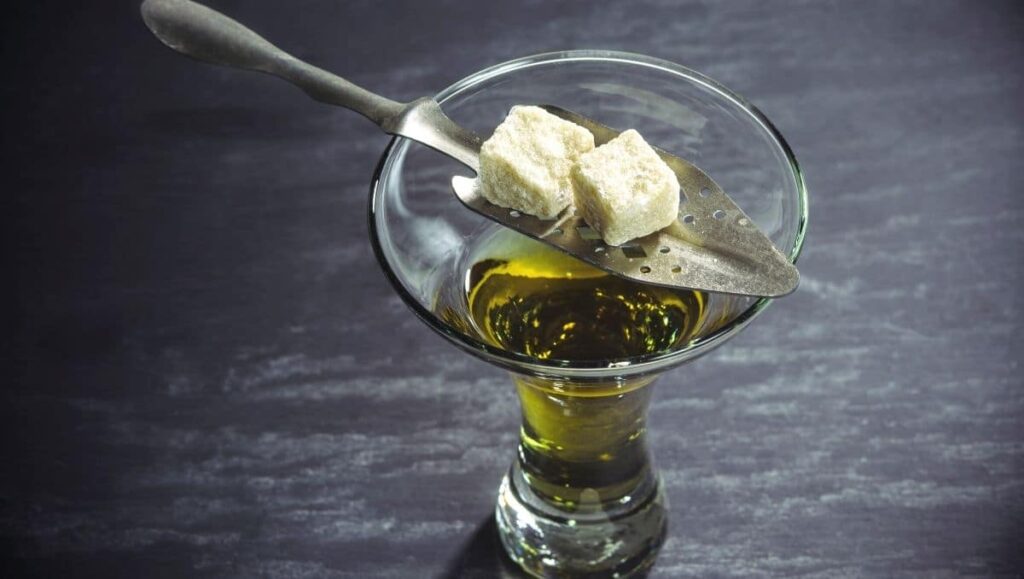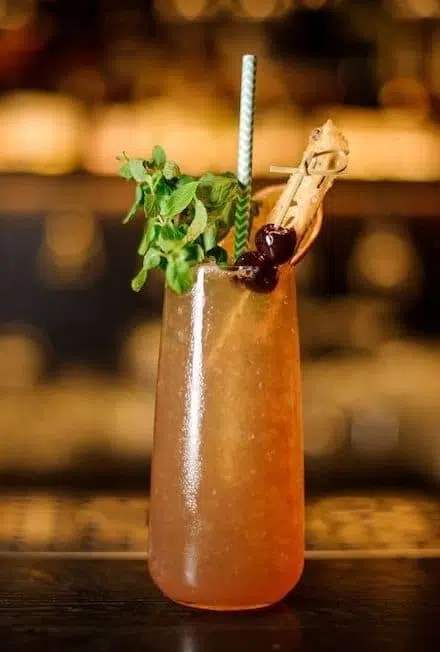You often come across cocktail recipes that call for Absinthe, just to find that the recommended brand in the ingredient list is Pernod. When you then head to your favorite liquor store, you will find that Pernod is not labeled an Absinthe.
That is because Pernod is not Absinthe. It is, however, very similar to Absinthe. Both are green-colored, and both are anise-flavored. But that alone does not explain the confusion.
So how does it come that these two get mixed up so often?
What is Absinthe?
Absinthe is an anise-flavored, green-colored, and overproof spirit invented in Switzerland in the late 1700s. It is made with many different herbs, of which the most noteworthy are wormwood, fennel, and, of course, anise.

To get its natural green color, producers infuse the clear-colored distillate (Absinthe Blanche) with various herbs before distilling it a second time.
If you want to know more about this, read our guide to Absinthe.
What is Pernod?
Pernod, or Pernod Pastis to be precise, is an anise liqueur from France with an alcohol content of 40%.
It was created in the 1920s as a substitute for Absinthe. It is made with mint, coriander, fennel, and star anise. - A more affordable alternative to the green anise used in Absinthe.
Pernod vs. Absinthe - why the confusion?
Before I get to the similarities and differences between Pernod and Absinthe, I quickly want to explain why the two are so closely connected.
Apart from the obvious (taste and color), there's another reason you can find Pernod in many classic Absinthe cocktails.
In the early 20th century, Absinthe got banned because authorities believed that the woodworm in the spirit caused hallucinations and other psychedelic effects.

However, until that ban, the Swiss spirit had been enjoying great popularity, and people were desperate for a substitute for the Green Fairy.
That's when's when Pernod Pastis stepped on the stage. It had a similar flavor and a similar appearance. Consequently, cocktail bars soon used it as a substitute for their favorite Absinthe drinks.
Over the years, the whole story fell into oblivion. And when the ban on Absinthe was lifted, some barkeepers stuck to Pernod, while others switched back to Absinthe. And that eventually led to a bit of a mix-up.
On a side note: From 1805 until the ban in the 1910s, the Pernod company had been producing Absinthe. And after the ban was lifted, the company (now Pernod Ricard) once more released a Pernod Absinthe. However, the Pernod Pastis remains more popular.
Pernod vs. Absinthe - the similarities
As mentioned, Pernod Pastis and Absinthe both have a strong anise flavor, and both formulas include fennel. The overall taste is quite similar.
Another thing the two spirits have in common is the green color and the so-called louche effect. This effect occurs when you add water to strongly anise-flavored liqueurs and spirits.
Pernod vs. Absinthe - the differences
Now to the differences: First, Pernod gets its principal flavor from star anise. Absinthe, in turn, contains the more expensive green anise.
Another huge difference is the famous woodworm. This ingredient had to go to bypass the ban since that was due to the neurotoxin Thujone that occurs naturally in woodworm. -Even though in microscopic amounts.
A third difference is the level of alcohol: Absinthe is an overproof spirit, and its ABV usually ranges between 50 and 74%. Pernod clocks in at 40% vol.
And also a relevant factor: with Pernod Pastis, you get a quality spirit for about USD30 - 40 in the US and around €15 in most European countries. For a quality Absinthe, you usually need to dig a little deeper.
Absinthe and Pernod in cocktails
In most cases, you can use Pernod and Absinthe as substitutes. Nevertheless, there are drinks that traditionally want Absinthe, while others call for Pernod instead.
For instance, the Zombie, one of the most famous Tiki Cocktails, works beautifully with Pernod. The same goes for the Cobra's Fang, another Tiki classic, or the Corpse Reviver #2.

On the other hand, for the Death in the Afternoon Cocktail, you need Absinthe if you want to honor the inventor, Ernest Hemingway.
Also, classic cocktails like the Monkey Gland or the Tuxedo are better with actual Absinthe.

